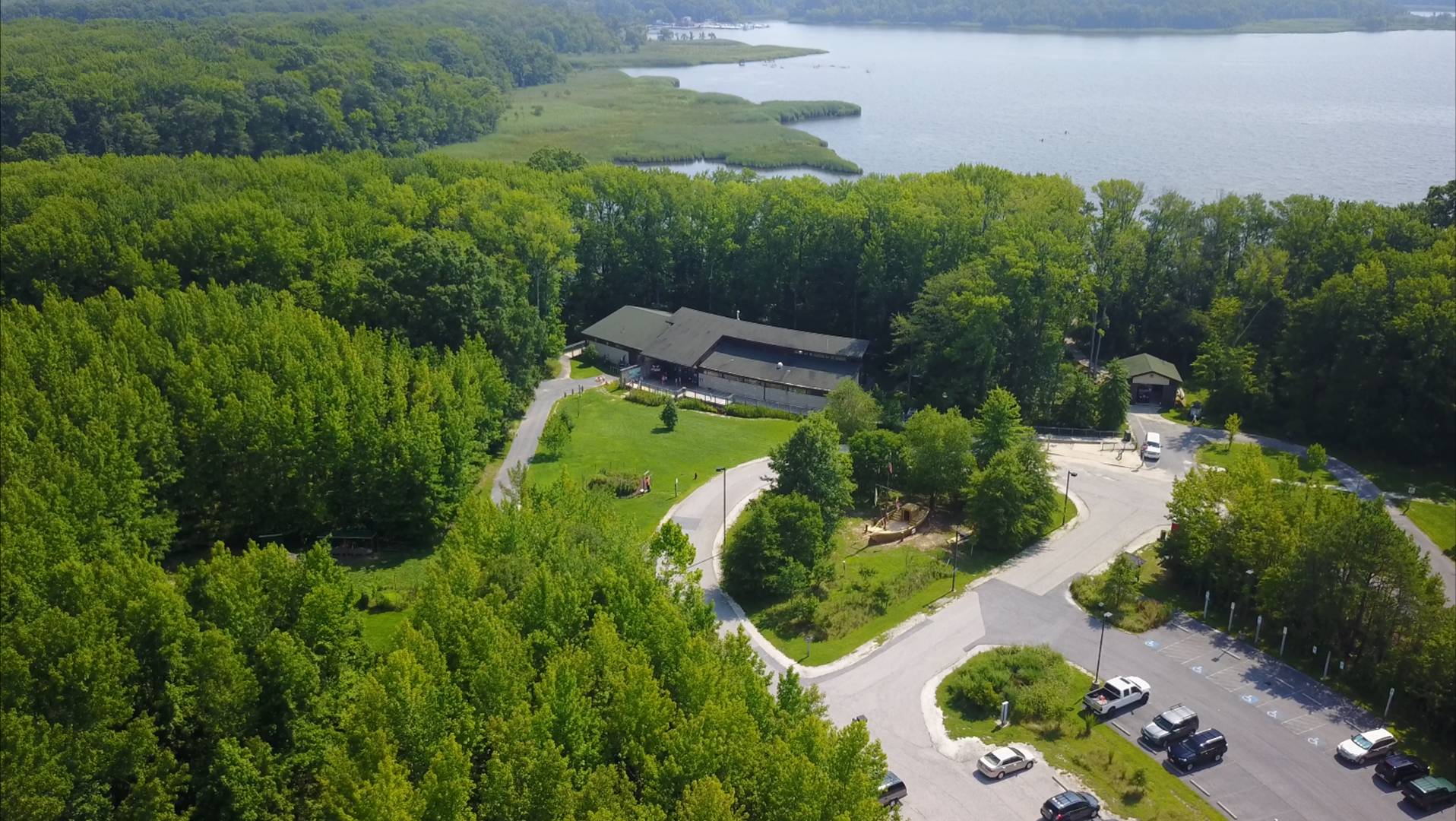The cold months bring a variety of waterfowl to Dundee Creek and the surrounding Upper Chesapeake Bay, but one of the most recognizable is the hooded merganser. Surprisingly though, hooded mergansers are year-round residents in our area. Only during the Winter do they leave their more secluded and solitary fresh-water Summer homes to form flocks on tidal creeks and other larger bodies of water.
Like all mergansers, hooded mergansers feed largely on fish which they hunt underwater by sight. Their largely piscivorous lifestyle is made plain by the shape of their bills—narrow, serrated, and pointed—which are good at hanging onto slippery, wriggling fish.
Hooded mergansers have a somewhat broader diet than their merganser relatives, as they will also eat crayfish, amphibians, shellfish, and some vegetation.
Three species of merganser can be seen in our area during the Winter: common, red-breasted, and hooded. The common and red-breasted varieties are exclusively Winter residents, with their breeding ranges well to the north, primarily in Canada.
Hooded mergansers, by contrast, can be found on rivers, streams, and ponds in the Summer, where they nest in nearby tree cavities. They will also readily nest in nest boxes, like wood ducks. After the chicks hatch, they will leap to the ground within 24 hours and follow their mother to the nearest body of water.
Winter brings hooded mergansers to larger bodies of water and into larger flocks that may include other mergansers and other species of diving ducks.
Like other diving ducks, the legs of hooded mergansers are set far back on their bodies, which makes them awkward on land. Unlike familiar dabbling ducks—such as mallards and wood ducks, which can literally leap out of the water to take flight—mergansers must run along the water’s surface to get airborne.
If you find yourself on a hike around Marshy Point and notice a strikingly-colored, small duck, you may be looking at a hooded merganser. They tend to sit somewhat low in the water. The males have chestnut-colored sides and an obvious black and white crest. The females are also crested but are more brownish overall.
Although the weather is cold, Winter affords some great opportunities to view hooded mergansers and other Winter waterfowl—so bundle up, grab your binoculars, and come take a look!

